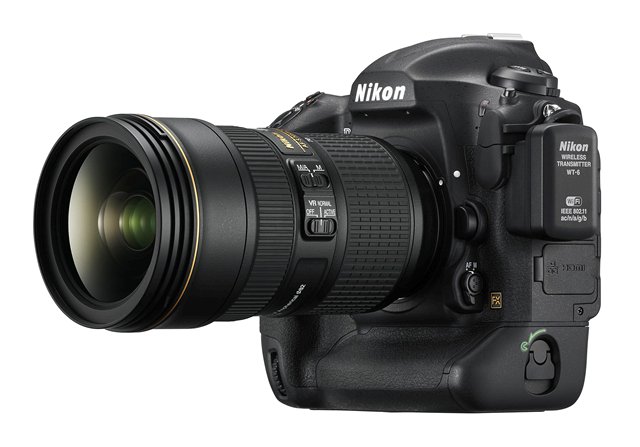
The D5 is Nikon's top-end flagship full-frame DSLR and following a firmware upgrade, the camera is expected to become more powerful than ever. However, the Nikon D5 faces stiff competition from the likes of Sony and Canon. How does the Nikon stack up against its rivals?
Resolution
The Nikon D5 features a 20.8 MP full-frame CMOS sensor. While this is definitely not as high as the D810 or even the D3x from 2012, Nikon believes that 20.8 MP hits a sweet spot. In comparison, the Canon 1DX Mark II features a 20.2 MP full-frame sensor, keeping the scores more or less tied. However, the Sony A7R II features a 42.4MP sensor.
Video
The one feature that brings all three cameras together is their ability to shoot 4K video. So far, the Nikon D5 could shoot 4K video for only up to three minutes. However, with the new firmware update, the video length has been bumped up to 30 minutes, keeping the Nikon well within striking distance of the Canon 1DX and the Sony A7R II. However, while the Nikon and the Sony can shoot full-HD video at up to 60 frames per second, the Canon 1DX Mark II shoots full-HD video at up to 120 fps.
Autofocus
With 399 AF points, the Sony A7R II boasts of better specs compared to the Nikon D5 and the Canon 1DX Mark II. The D5 features 153 points and the 1DX Mark II features 61 points. However, the Canon 1DX Mark II also features a dual-pixel CMOS sensor that allows users to focus on the fly in live-view mode.
Speed
When it comes to shooting low light, the Nikon D5 stands out from the crowd. It has a maximum sensitivity setting peaking at 3,280,000, in boost mode and the ISO-standard sensitivity ranges between 100 and 102,400. The Sony A7R II's ISO sensitivity ranges between 100 and 25,600 and the Canon 1DX Mark II's ISO sensitivity ranges between 100 and 51,200. In boost mode, Canon's sensitivity extends up to 409,600, while the Sony stops at 102,400.
All three cameras have a maximum shutter speed of 1/8000 of a second; however, when it comes to burst mode, the DSLRs, curiously outdo the mirrorless camera. The Nikon D5 fires away at 14 fps and the Canon 1DX Mark II blows past it at 16 fps. The Sony A7R II, however, is left far behind, firing away at 5fps.
Stability
Both the Nikon D5 and the Canon 1DX Mark II rely on their lenses to take care of any image stabilisation. The Sony, however, features 5-axis in-body image stabilisation. In addition to its proprietary VR image stabilisation system, the Nikon D4, while shooting full-HD video, offers electronic image stabilisation.















